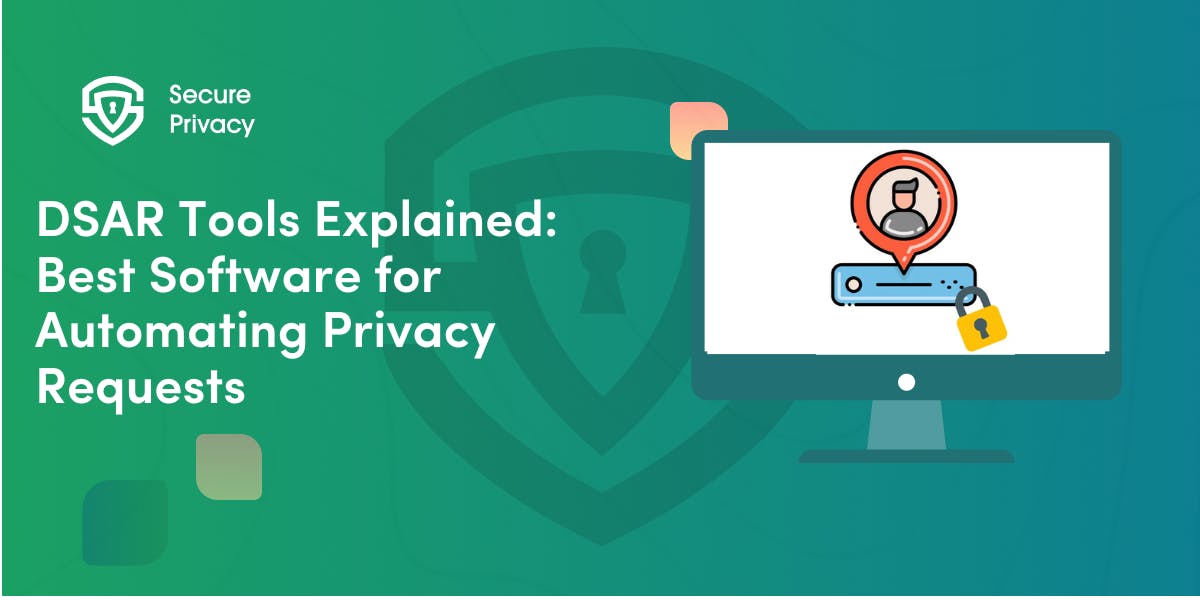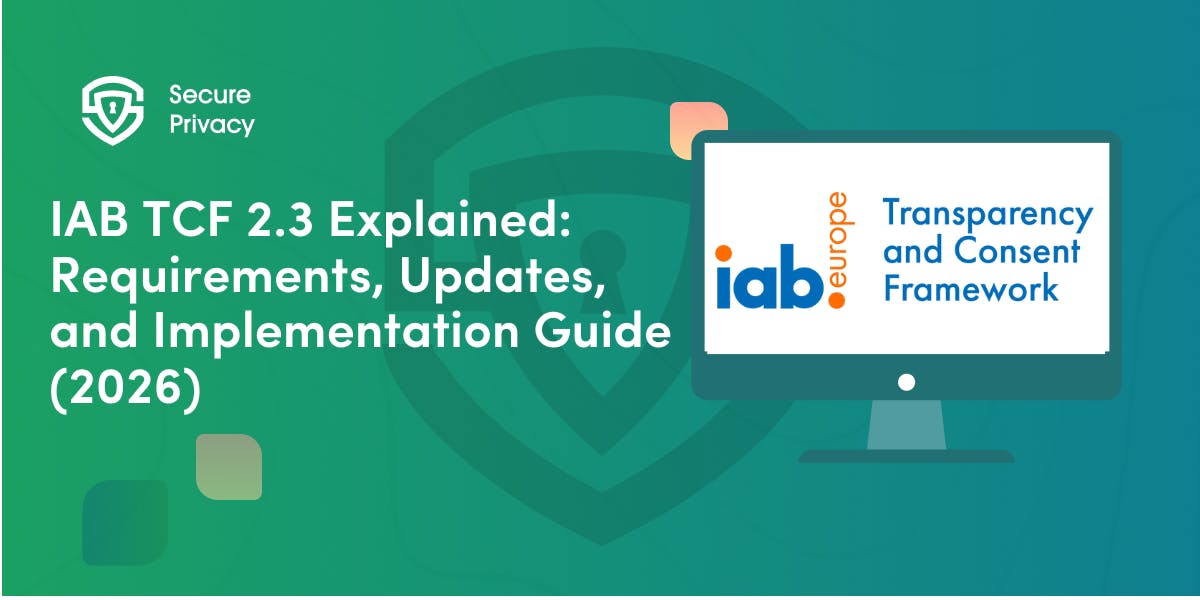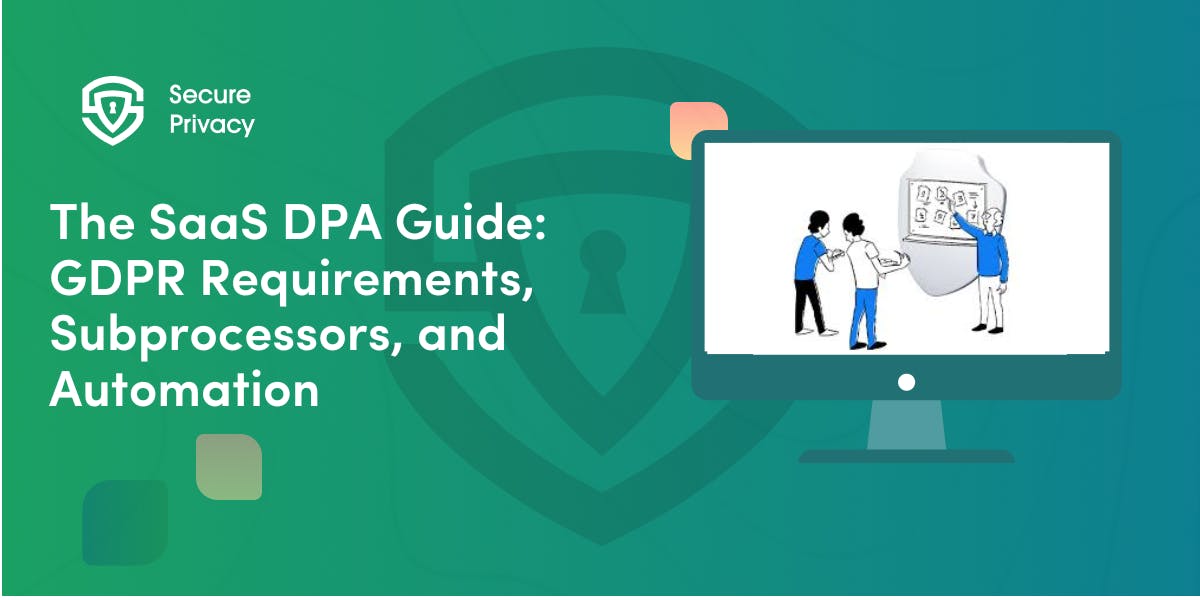Securing Your Website The Right Way: A Comprehensive GDPR Compliance Checklist
As a website owner, it's crucial to understand the GDPR and to ensure that you are fully GDPR compliant. Failure to comply with the GDPR can result in substantial fines and damage to your reputation, so it's important to take the necessary steps to protect user data and to ensure that you are processing personal data in a manner that complies with the GDPR. Check our comprehensive GDPR compliance checklist.
The General Data Protection Regulation (GDPR) is a comprehensive data protection law introduced by the European Union (EU) in May 2018. The GDPR replaces the 1995 Data Protection Directive and aims to harmonize data protection laws across the EU and to give EU citizens more control over their personal data. The GDPR applies to all organizations, including website owners, that process personal data of EU citizens, regardless of whether the organization is based inside or outside the EU.
The GDPR defines personal data as any information that relates to an identified or identifiable natural person. This includes names, addresses, email addresses, IP addresses, and other information that can be used to identify a person. The GDPR sets out strict rules for collecting, processing, storing, and sharing personal data and requires organizations to implement appropriate measures to protect the privacy and security of personal data.
As a website owner, it's crucial to understand the GDPR and to ensure that you are fully GDPR compliant. Failure to comply with the GDPR can result in substantial fines and damage to your reputation, so it's important to take the necessary steps to protect user data and to ensure that you are processing personal data in a manner that complies with the GDPR.
Key GDPR Compliance Requirements
Before we discuss how to maintain GDPR compliance with your website, it is important to understand the key GDPR compliance requirements.
- User Consent: The GDPR requires that you obtain explicit consent from users before collecting, processing, or storing their personal data. This means that users must opt-in to having their data collected and processed. You can obtain consent by providing a clear and concise checkbox or similar mechanism for users to consent.
- Data Protection Officer (DPO): If your organization processes a large scale of personal data, you may be required to appoint a DPO to oversee data protection activities. The DPO should be an expert in data protection laws and regulations and independent of data processing activities.
- Data Processing Agreement: If you are working with third-party services that process personal data on your behalf, you must have a data processing agreement that sets out both parties’ responsibilities and obligations.
- Data Privacy Impact Assessment (DPIA): A DPIA is a risk assessment that identifies the potential risks to data privacy and security posed by your data processing activities. It is mandatory to conduct a DPIA in certain circumstances, including when you process special categories of personal data or when the processing is likely to result in a high risk to data subjects, as well as a part of GDPR Privacy by Design implementation.
- Legal Basis for Processing Personal Data: You must have a lawful basis for processing personal data, such as user consent, legitimate interest, or contract performance. The GDPR requires that you are transparent with users about the legal basis for processing their personal data.
- Data Security: You must implement appropriate technical and organizational measures to ensure the security of personal data, including encryption, firewalls, and regular security audits.
- Data Erasure: The GDPR gives data subjects the right to request the deletion of their personal data. You must have a process to respond to these requests and erase personal data following the GDPR.
- Data Portability: The GDPR gives data subjects the right to receive a copy of their personal data in a commonly used format and to have their data transferred to another data controller. You must have a process in place to respond to these requests.
- Reporting Data Breaches: If you suffer a data breach that results in loss, theft or unauthorized access to personal data, you must report the breach to the relevant supervisory authority within 72 hours of becoming aware of the breach.
- Documentation: You must maintain accurate and up-to-date documentation of your data processing activities, including records of user consent, DPIA results, and data processing agreements.
Website Data Collection and GDPR Requirements
Data collection is at the heart of many websites and businesses. It's important to collect data in a way that complies with the GDPR requirements. The GDPR sets out specific requirements for collecting, processing, and storing personal data, including:
- Provide clear and concise information about the data being collected, the purposes for which it will be used, and who will be responsible for processing it.
- Obtaining the explicit consent of data subjects before collecting their personal data.
- Ensuring that the data collected is adequate, relevant, and limited to what is necessary for the specific purposes for which it is being collected.
- Storing the data securely and taking appropriate measures to protect it from unauthorized access, use, or disclosure.
To ensure compliance with the GDPR requirements, it's important to:
- Regularly review your data collection practices to ensure that they are in line with the GDPR requirements.
- Keep a copy of the GDPR checklist on hand to ensure all requirements are met.
- Consider using automated tools to help with the collection and management of customer data.
By following the above steps and regularly reviewing your data collection practices, you can help to ensure that your website is GDPR compliant.
Website GDPR Compliance Checklist
Here is a checklist to make your website GDPR compliant:
- Designating a Data Protection Officer (DPO)
- Assessing Data Protection Impact (DPIA)
- Obtaining User Consent for Data Processing
- Updating Your Privacy Policy
- Implementing Technical and Organizational Measures
- Reviewing Third-Party Services
- Establishing a Data Erasure Process
- Preparing for Data Breaches
- Maintaining Documentation and Seeking Legal Advice
This article will discuss what is needed in each of these items.
Read our Comprehensive GDPR Compliance Checklist for US Companies.
Learn how to integrate GDPR with Privacy by Design principles.
Designating a Data Protection Officer (DPO)
The GDPR requires organizations that carry out large-scale data processing activities or that process special categories of personal data to appoint a Data Protection Officer (DPO). The DPO monitors internal compliance with the GDPR and advises the organization on its data protection obligations.
As a website owner, you may be required to appoint a DPO if you process large amounts of personal data or if you process special categories of personal data, such as data related to health, religion, or political opinions. If you are unsure whether you are required to appoint a DPO, you should seek legal advice.
The DPO must be an expert in data protection law and must have a good understanding of the GDPR and its requirements. The DPO must be independent and able to perform its role without conflict of interest.
The DPO is responsible for the following:
- Monitoring compliance with the GDPR and other data protection laws
- Advising the organization on its data protection obligations
- Providing information and advice to data subjects on their rights under the GDPR
- Cooperation with the relevant supervisory authority
- Keeping up to date with changes in data protection law and guidance.
As a website owner, it's important to ensure that you have appointed a DPO if required and provided the DPO with the resources and support they need to perform their role effectively.
Assessing Data Protection Impact (DPIA)
The GDPR requires organizations to carry out a Data Protection Impact Assessment (DPIA) in certain circumstances where the processing of personal data is likely to result in a high risk to the rights and freedoms of data subjects. A DPIA is a systematic process for evaluating the privacy impact of a proposed data processing activity and is designed to help organizations identify and mitigate privacy risks.
You should carry out a DPIA if you are planning to introduce a new data processing activity that is likely to result in a high risk to the privacy of your users. This could include, for example, the use of profiling or the collection of sensitive personal data.
The DPIA should consider the following factors:
- The nature, scope, context, and purposes of the data processing activity
- The risks to the rights and freedoms of data subjects
- The measures that are in place to mitigate those risks
- The suitability and effectiveness of those measures.
The DPIA should be carried out before the data processing activity takes place and should be reviewed regularly to ensure that privacy risks are effectively managed.
The DPIA process should be taken seriously, and allocate the resources and time needed to conduct a thorough assessment. This will help to ensure that you are aware of the privacy risks associated with your data processing activities and that you are taking the appropriate steps to mitigate those risks.
Obtaining User Consent for Data Processing
The GDPR requires organizations to obtain the explicit and informed consent of data subjects to process their personal data. This means that users must be provided with clear and concise information about the data processing activities that will take place and must be given the option to opt-in to the processing of their data.
As a website owner, you must ensure that you have implemented a robust consent process that meets the requirements of the GDPR. This includes:
- Providing clear and concise information to users about the data processing activities that will take place
- Using a double opt-in process to confirm user consent
- Providing users with the option to withdraw their consent at any time
- Keeping records of user consent to ensure that you can demonstrate compliance with the GDPR.
You must also ensure that you have implemented appropriate measures to verify the age of users, as the GDPR requires organizations to obtain the explicit consent of users who are at least 16 years of age.
Updating Your Privacy Policy
The GDPR requires organizations to provide data subjects with clear and concise information about the processing of their personal data, including the purposes for which the data will be processed and the legal basis for the processing. This information must be provided in a privacy policy that is easily accessible and understandable.
As a website owner, it's important to ensure that your privacy policy is up to date and meets the requirements of the GDPR. This includes:
- Providing clear and concise information about the data processing activities that will take place on your website
- Providing information about the legal basis for the processing of personal data
- Providing information about the rights of data subjects, including the right to access, rectify, erase, and transfer their data
- Providing information about the data retention periods for different categories of personal data
- Providing information about the security measures in place to protect user data.
It's important to review your privacy policy regularly and to update it as necessary to ensure that it remains compliant with the GDPR and other data protection laws. This will help ensure that you are providing users with the information they need to make informed decisions about processing their personal data.
Implementing Technical and Organizational Measures
The GDPR requires organizations to implement appropriate technical and organizational measures to protect the personal data of data subjects from unauthorized access, disclosure, alteration, and destruction. This includes implementing measures to secure data in transit and at rest and ensuring the availability and resilience of systems and services.
As a website owner, it's important to ensure that you have implemented appropriate technical and organizational measures to protect user data, including:
- Encrypting user data in transit and at rest
- Implementing firewalls and access controls to restrict unauthorized access to user data
- Implementing backup and disaster recovery procedures to ensure the availability of user data in the event of a system failure
- Regularly review and update your security measures to ensure they remain effective and up to date.
Reviewing Third-Party Services
The GDPR requires organizations to ensure that any third-party services that process personal data on their behalf comply with the requirements of the GDPR. This includes reviewing the privacy po’ privacy policies and security measures to ensure that they are adequate.
As a website owner, it's important to review any third-party services that you use to process user data, including:
- Analytical tools, such as Google Analytics
- Social media platforms
- Payment processors
- Customer relationship management systems
It's important to ensure that these services are GDPR compliant and that they have appropriate measures in place to protect the personal data of data subjects.
Establishing a Data Erasure Process
The GDPR requires organizations to establish a process for the erasure of personal data in response to the request of a data subject or under the retention periods set out in their privacy policy.
As a website owner, it's important to establish a data erasure process that meets the requirements of the GDPR, including:
- Implementing procedures to delete user data in response to a request for erasure
- Implementing procedures to delete user data per your privacy policy
- Keeping records of all data erasure activities to demonstrate compliance with the GDPR.
It's important to review your data erasure process regularly to ensure that it remains effective and meets the requirements of the GDPR and other data protection laws.
Preparing for Data Breaches
The GDPR requires organizations to have appropriate measures to detect, report, and mitigate data breaches. This includes implementing procedures for responding to data breaches and communicating with data subjects, supervisory authorities, and other relevant stakeholders in the event of a data breach.
As a website owner, it's important to prepare for data breaches by:
- Implementing procedures for detecting and reporting data breaches
- Designating a team responsible for responding to data breaches
- Establishing clear lines of communication with relevant stakeholders in the event of a data breach
- Develop a data breach response plan that outlines the steps to be taken during a data breach.
It's important to review your data breach response plan regularly to ensure that it remains effective and up to date.
Maintaining Documentation and Seeking Legal Advice
The GDPR requires organizations to maintain documentation of their processing activities and to seek legal advice when necessary. This includes maintaining records of the personal data that is processed, the purposes for which it is processed, and the categories of data subjects.
As a website owner, it's important to maintain appropriate documentation and seek legal advice when necessary to ensure compliance with the GDPR, including:
- Maintaining records of all personal data processed on your website
- Maintaining records of the purposes for which personal data is processed
- Maintaining records of the categories of data subjects
- Seeking legal advice when necessary to ensure compliance with the GDPR and other data protection laws.
It's important to review your documentation regularly to ensure that it remains up to date and that it accurately reflects your processing activities.
Conclusion
The GDPR is a comprehensive data protection law that governs the processing of personal data by data controllers and data processors. Similar comprehensive frameworks have emerged globally, including Nigeria's NDPA 2023, which established Nigeria as a leader in African data protection As a website owner, it’s crucial to be GDPR compliant to avoid non-compliance fines and to ensure that you are processing user data in a manner that respects data privacy. The GDPR compliance checklist in this blog will help you ensure that your website is fully GDPR compliant and that you are taking the appropriate steps to protect user data.
To help ensure that your website is fully GDPR compliant, we encourage you to sign up for Secure Privacy. Our solution is designed to help website owners automate their data collection and management processes, making it easier to comply with the GDPR requirements. With Secure Privacy, you can be sure that your website is fully GDPR compliant and that your customer data is protected. Contact us today to learn more about our solution and how it can help you comply with the GDPR regulations and privacy laws.
Stay ahead of global regulations with our 2026 Privacy Roadmap.
Get Started For Free with the
#1 Cookie Consent Platform.
No credit card required

DSAR Tools Explained: Best Software for Automating Privacy Requests
You're drowning in data subject access requests. Manual searches through dozens of systems miss regulatory deadlines and expose organizations to fines starting at $2,500 per violation. The solution? DSAR tools — purpose-built software that automates the entire process of responding to data subject access requests, from intake to delivery.
- Legal & News

IAB TCF 2.3 Explained: Requirements, Updates, and Implementation Guide (2026)
Your ad revenue dropped 40% overnight. Google stopped bidding on your inventory. Your DSP partners flagged your traffic as non-compliant. The culprit? An outdated TCF 2.2 consent string after the February 2026 enforcement deadline.
- Legal & News
- Cookie Consent

The SaaS DPA Guide: GDPR Requirements, Subprocessors, and Automation
Your enterprise deal stalled in legal review for three weeks while procurement demands a comprehensive data processing agreement, your legal team scrambles to understand GDPR requirements, and your sales team watches the quarter-end deadline approach with increasing anxiety.
- Legal & News
- Data Protection
